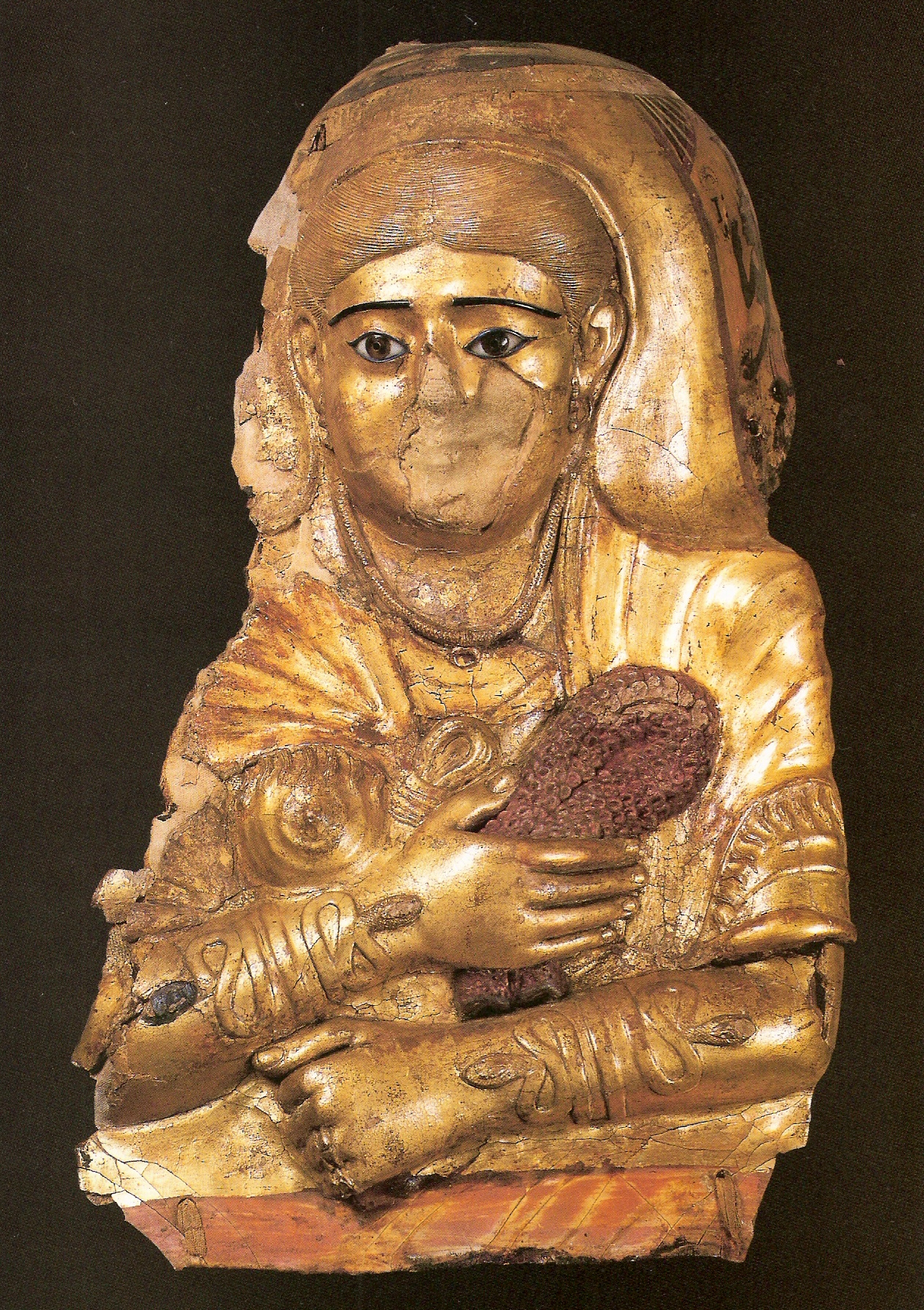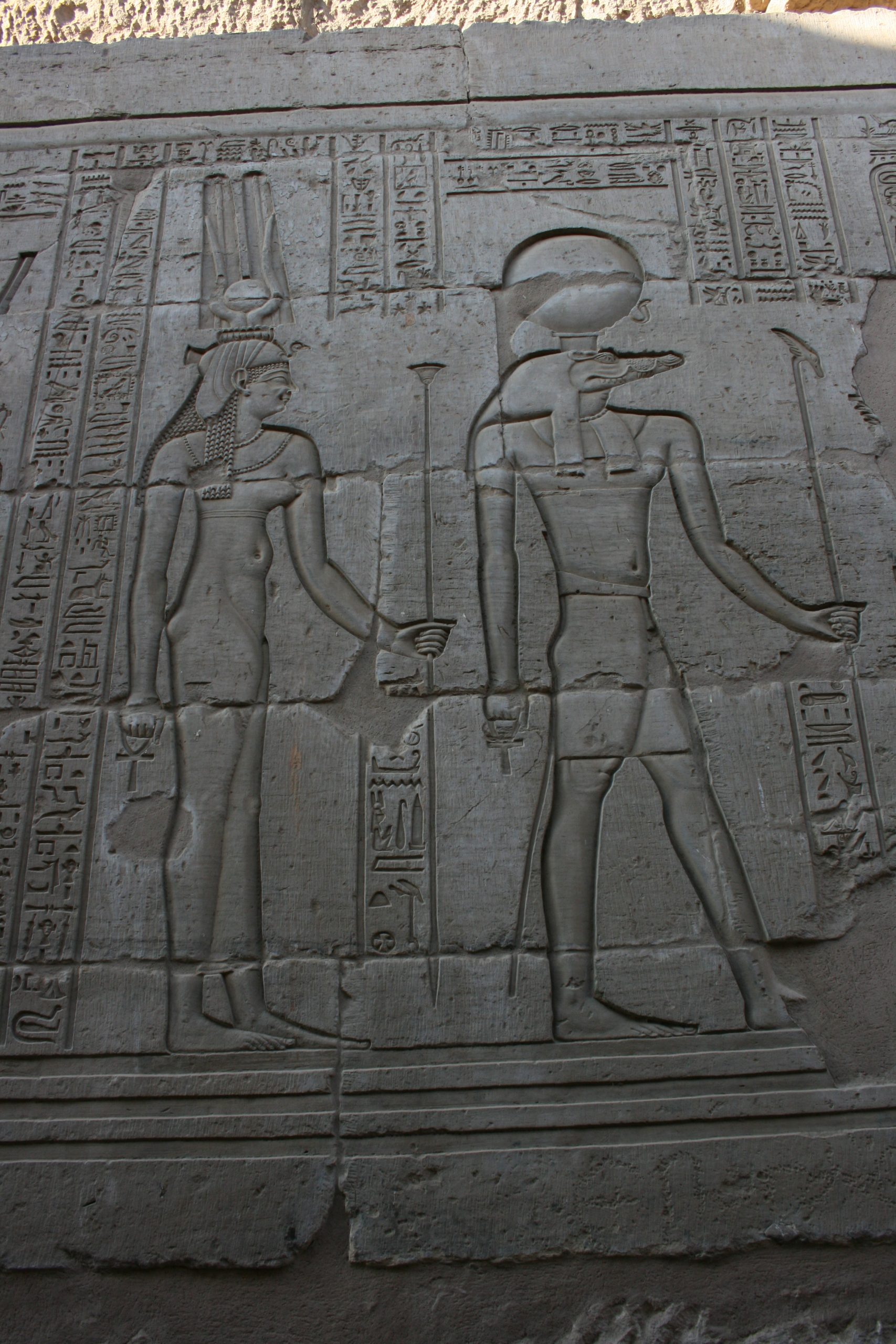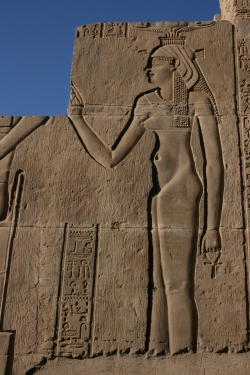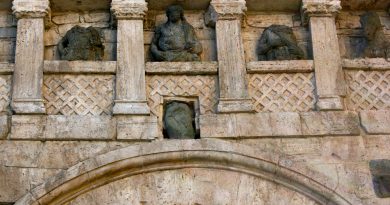Iconography of a goddess
Isis, wife of Osiris and mother of Horus, is commonly associated with another ancient Egyptian deity, named Hathor. This name, which literally means “house of Horus”, represents a symbolic womb for her son Horus.
Isis/Hathor was the goddess of love as well as the goddess of fertility. However she did not bless fecundity solely upon women, but also upon the land. The discovery of wheat and barley is attributed to her. She was the protector of agriculture and iconographically she was often depicted with two cow’s horns over her head, and with a sun disk haloed between the horns.

Isis was the queen of Earth, Sky, and Seas. Beginning from the New Kingdom (1560-1085 BCE) Isis and her heavenly sister Nefti were represented together inside the ship of Rah, used tby the God Io drag the sun across the sky.
sis takes on a different persona. In the morning she is personified as Sirius (or Sothis to the Greek) : she is the light that follows Orion (Osiris). The appearance of the constellation Orion determined the ancient Egyptian New Years, rising usually around July 15 and inaugurating the flood season of the Nile.
Isis was the goddess of medicine, as well as goddess of salvation who mourns the dead. Protecting mother of the living pharaoh, as well as wife to those deceased, Isis takes on the role also as the mother of all men, as she was known to bring compassion and hope to all of humanity.
It is in this motherly role that she rears Horus, and at the same time was able to help all mortals struggling in their earthly abodes.
Isis attributes and epithets were so numerous that in the hieroglyphics she was called “the many-named”. In Syria and Phoenicia her traits are incredibly similar to those of the goddess Astarte: portrayed nude, with a richly decorated diadem and necklace.

Already by the 5th century BCE in the Greek world Herodotus makes note of the assimilation of Isis with the goddess Demeter (Her. II, 59). He describes her as a goddess holding ears of corn or a torch, with her dress gathered and knotted around a breast in the typical style of Isis. She carries a basileion on her head or the traditional crown with a sun disk, where however the feathers and the cow’s horns are substituted for by ears of corn.
In Egypt, around the end of the Ptolemaic reign, Isis appears highly assimilate to Aphrodite, often-portrayed nude, with a basileion on her head. She is depicted as either wearing her hair loose or gathered in a bun, an elegant hair style called “the Libyan style.”
At times her head is veiled. Occasionally she holds a scepter or an orb in her right hand, while with the left she holds a cornucopia, the symbol of abundance and fertility.
Very often she is depicted with a “sistrum” in her right hand and a “situla”, a pail, in her left. The sistrum, a magical musical instrument, was one of the objects most frequently associated with Hathor.
It is not by chance that in Egypt stands a temple in Dendera, known as “the temple of sistrum.” Its architecture reminds to a musical instrument made of stone, able to create harmony on earth.
This “multitasking” goddess-queen was named by an ancient Capuan prayer: “Tu, una quae es omnia, dea Isis.” For her multiple functions and powers, Isis has been welcomed and honored even in temples that were dedicated to other goddesses.
The cult of Isis survived even in the first centuries of Christianity. Many of her iconographical aspects were absorbed by the figure of Maria, mother of Jesus. Isis, the Mother, was depicted in her throne sitting with her child Horus. This is the “Isis lactans,” found often as small bronzes or in relief, a representation surprisingly similar to the iconography of the ” Milk Madonna”, a popular end typical representation of the art of he Middle Ages.

Thanks to these characteristics as mother of all men, whose love nursed and protected Horus, Isis continued to be venerated for a long while, be it in the public or private sphere, in many places, and under many different names.
Bibliography:
“Iside, il mito il mistero la magia” a cura di E.A. ARSLAN.


